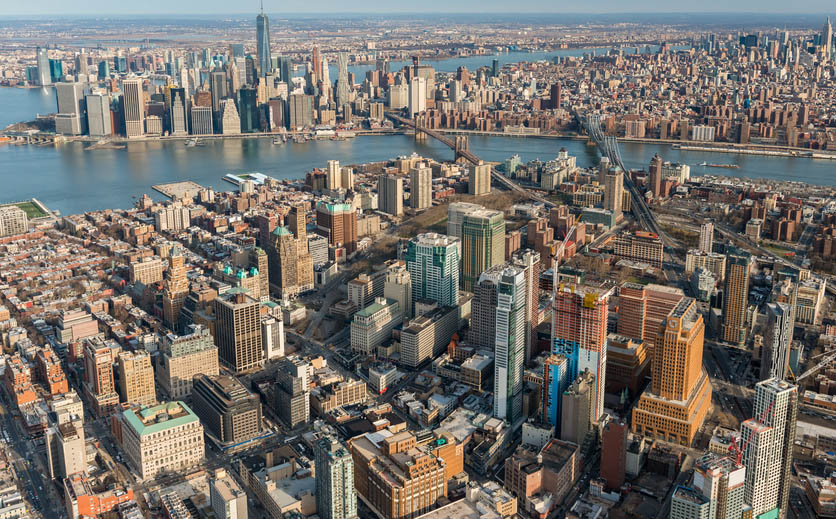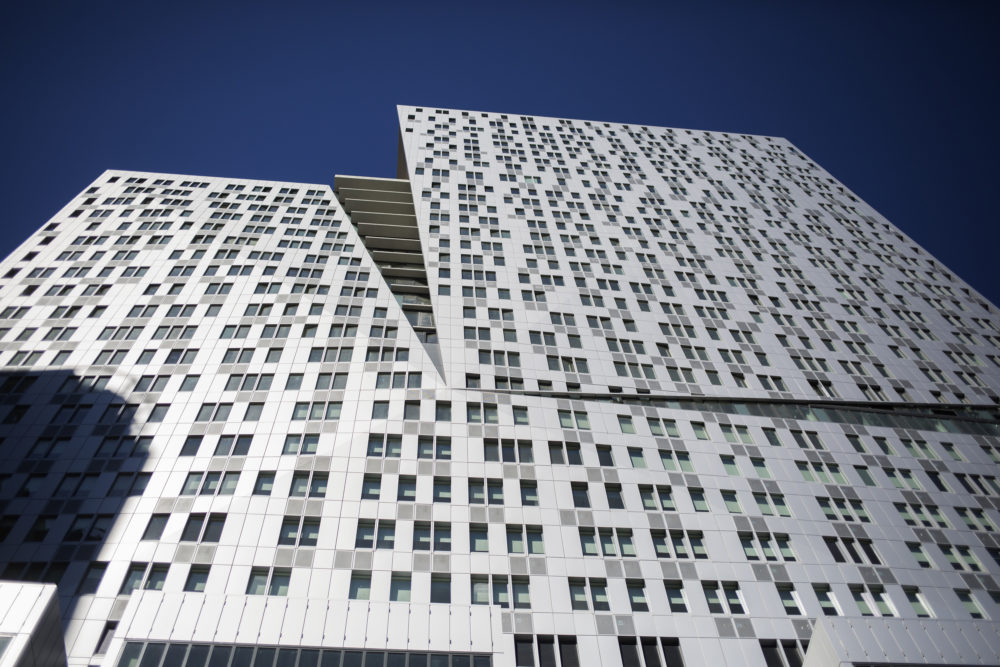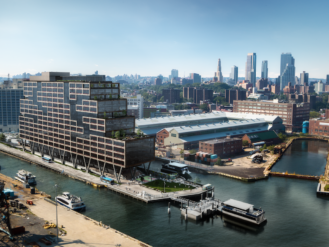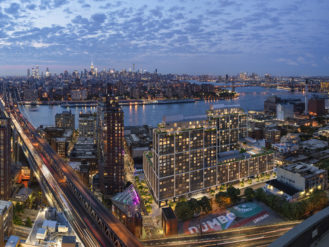When Too Much Building Is a Good Thing
Despite fears of an apartment bubble in Brooklyn, the surplus is good for renters and it won't last very long
An aerial view of downtown Brooklyn's forest of new residential skyscrapers, which has sprouted alongside Manhattan's building boom (Photo credit: Richard Cavalleri/ Shutterstock.com)
The thicket of cranes and construction sites that have dominated our city skyline for the last few years is beginning to dissipate. Not quite yet, but in the next 12 to 18 months, much of the surge of residential construction will be completed.
In its wake there will be gleaming new residential buildings. From high rises along the Brooklyn and Queens waterfront to high-end condos on Manhattan’s Billionaires’ Row on 57th Street. In Downtown Brooklyn alone, what feels like a new city of buildings will have emerged.
Some in the real estate press have labeled this sudden surge in new product in Downtown Brooklyn a “glut”, a word with negative connotations that implies something undesirable for the city. On the contrary, we should probably be rejoicing. Here’s why.
First, what happens when a plethora of new real estate comes online in a softening rental market? Rental rates go down. And not just in the new buildings where property owners are forced to offer concessions to fill their buildings. The surplus can have a stabilizing effect across the borough’s entire housing supply. As new residents are drawn to new product and not to existing brownstone Brooklyn, it can provide relief for current long-term tenants who cannot compete with the higher rents that newcomers are willing to pay.

The new residential tower called 300 Ashland, with 35 stories and 379 units, is adjacent to Brooklyn Academy of Music. Among its amenities: a roof terrace with a sun deck and four BAM Cinema theaters (Photo credit: Victor J. Blue/The New York Times/Redux)
Second, a robust pipeline of rental housing is not likely to come back anytime soon. And when it dries up, rents are bound to soar. As has been widely reported, the number of new residential building permits dropped precipitously at the end of 2015 with the expiration of an esoteric but highly utilized tax-abatement program known as 421-a. The development community and policymakers alike point to this tax program as the panacea to address the exorbitant state property tax on rental housing. Without the tax break, rental-housing development becomes unfeasible in this city.

Tucker Reed is a co-founder and principal at the real-estate firm Totem (Photo credit: Courtesy of Totem)
The negotiation between the city and the state on renewing or revamping the program has been in limbo for nearly 18 months. But even if an agreement on 421-a were reached soon, as has been hinted at for many months now, it will take time to restart the rental-housing pipeline as developers attempt to obtain building permits and line up financing. So we shouldn’t expect another “glut” of rental housing anytime soon.
Finally, given the highly competitive climate created by the rush to build before the expiration of 421-a, the consumer will benefit from the efforts by developers to differentiate their residential products. Even concessions like a month or two of free rent may not be enough in this increasingly aggresive climate. Perhaps it will force property owners to explore new packages of amenities that will enhance the living experience for their tenants. Particularly attractive to tenants may be new technology coming down the pike. These tools include Internet of Things overlays like Hayo, which uses augmented reality to control household appliances. Another is Hello Alfred, which supplies your rental apartment with a personal assistant to see to your weekly chores and to-do lists. (My company, Totem, is an advisor to Hello Alfred.)
We are regularly bombarded with news reminding us that there is not enough affordable housing in New York City. This is why I find the rush to label a temporary robust supply in a burgeoning submarket so bizarre. It is “gluts” like the ones we are seeing in Downtown Brooklyn that are the few bright spots we find in the housing world, when for once supply temporarily outpaces demand, putting downward pressure on rents.
Don’t worry about developers going bankrupt. Within a few quarters this new housing will be absorbed as well, and we can go back to complaining about housing shortages in Brooklyn. It’s the reality in a city as highly as desirable as ours, one that constantly attracts new residents and has been suffering from a chronic housing shortage for decades.
But in the interim, go out and find a new apartment (if you can afford the average rent for a one bedroom in Brooklyn). It’s a renters market.













